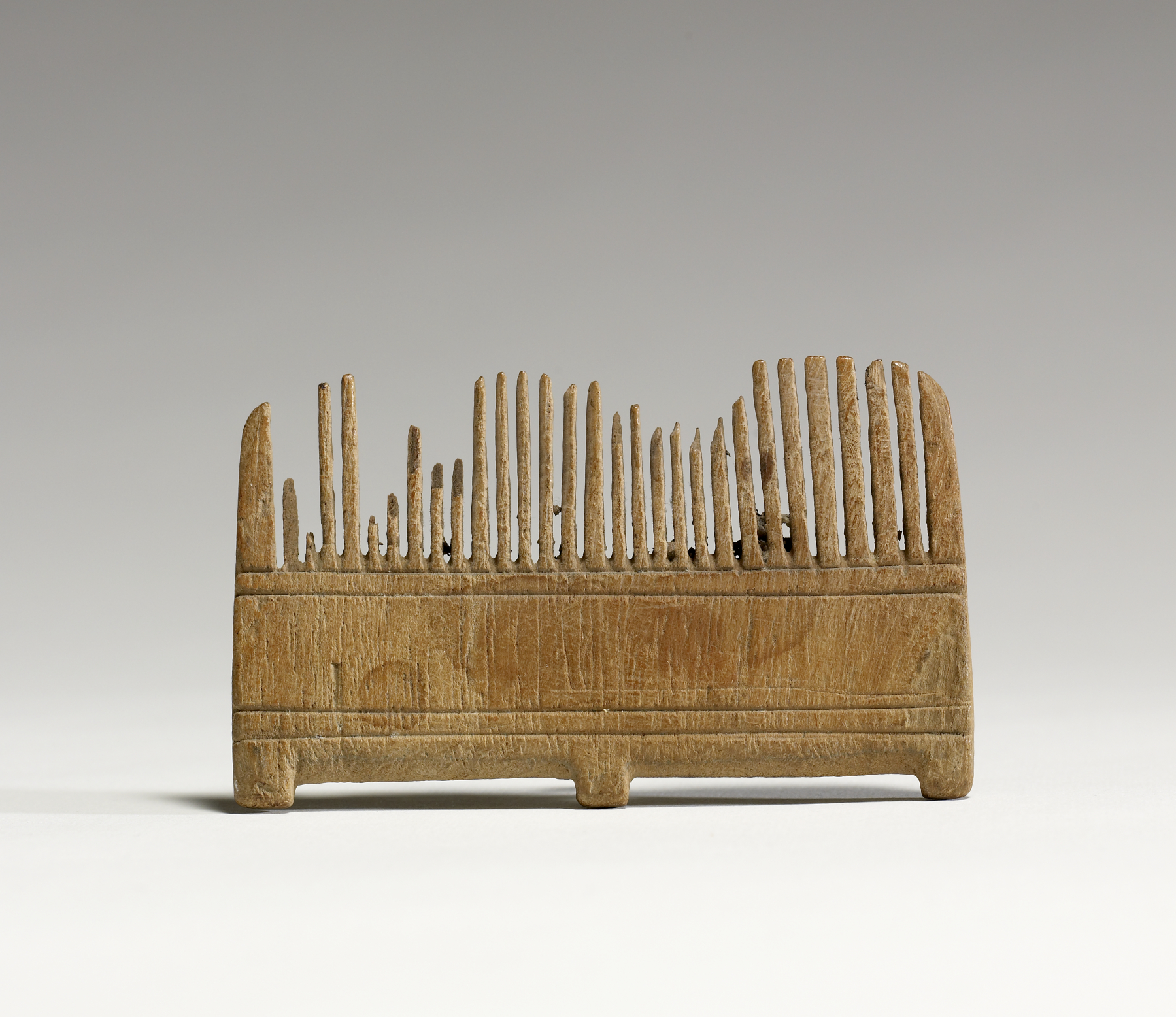Comb
This comb carved from a single piece of wood, possibly Sycamore Fig. There are thirty flat rectangular teeth. The two outermost teeth are slightly wider than the others and are rounded on the outer edges. The comb is rectangular in shape and the upper edge is rounded. It is modestly decorated with three rectangular projections along the top edge and two pairs of straight incised lines located just below the projections and just above the top of the teeth. This type of decoration is typical for simple combs of the 18th Dynasty. Several of the teeth are broken and there are surface stains from water or some other liquid. The multitude of scratches on the surface of the wood suggest that the object was actually used during the life of its owner.
Combs like this were probably used for one's natural hair, rather than for the elaborate wigs of the New Kingdom that required special instruments.
Provenance
Provenance (from the French provenir, 'to come from/forth') is the chronology of the ownership, custody, or location of a historical object. Learn more about provenance at the Walters.
Private collection; Walters Art Museum, 1960, by gift.
Exhibitions
| 1978 | In Search of Ancient Treasure: 40 Years of Collecting. The Walters Art Gallery, Baltimore. |
Measurements
H: 3 in. (7.6 cm)
Credit Line
Anonymous gift, 1960
Location in Museum
Accession Number
In libraries, galleries, museums, and archives, an accession number is a unique identifier assigned to each object in the collection.
In libraries, galleries, museums, and archives, an accession number is a unique identifier assigned to each object in the collection.
61.306


